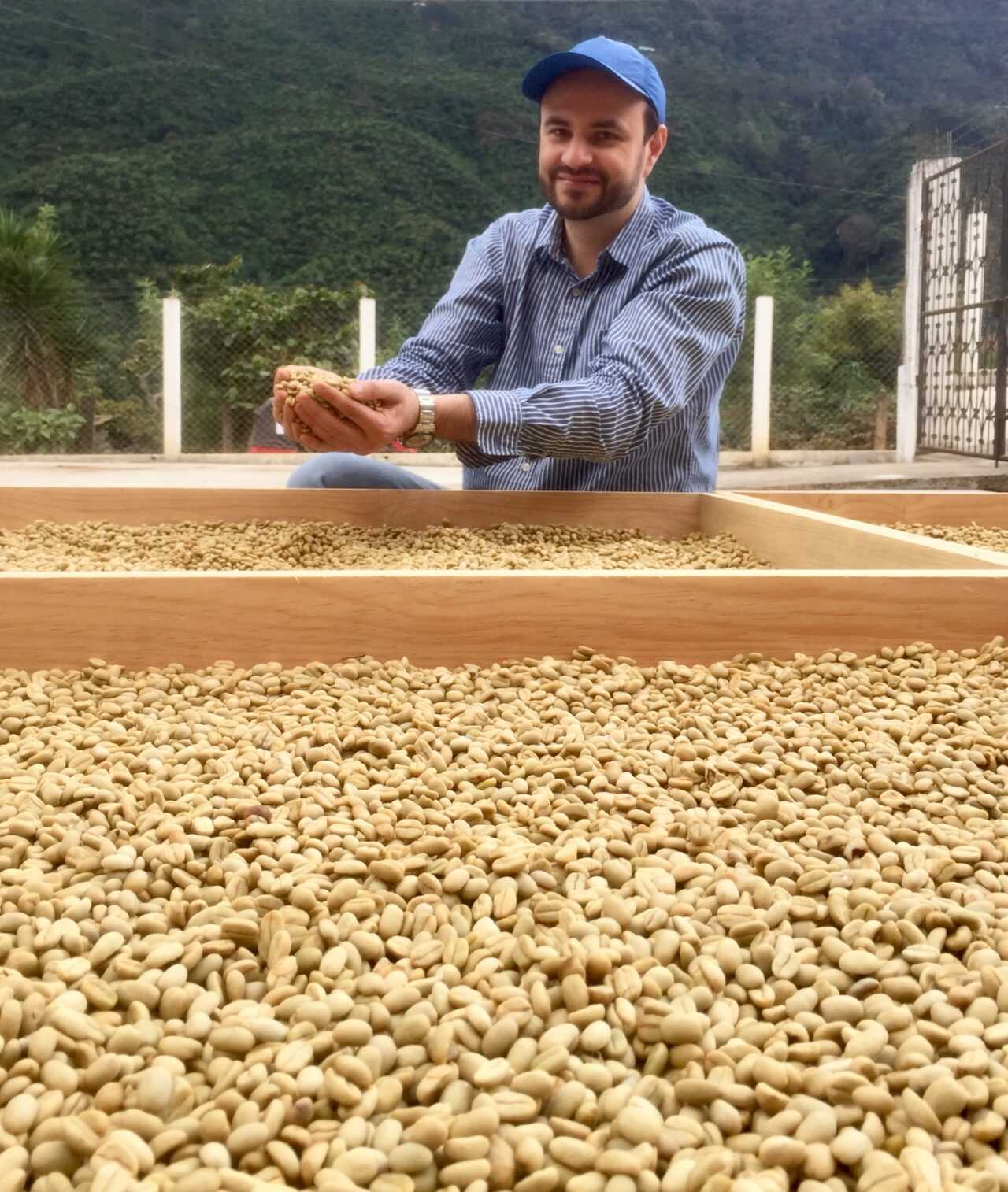MILAN – In a little region named Agua Dulce, Cuilco, near Mexico’s border representing one of the most important coffee zones in Huehuetenango known as a Highland Huehue, is located El Zapote & Anexos (348 km from Guatemala City). The coffee plantations are sown in an altitude that goes around 1,500 to 1,900 masl. Not so long ago, in the late 1950´s El Zapote & Anexos farm was acquired by the Pérez Family, the production of green coffee was around 20 qq (9,071 kg). At the beginning we only had Typica Coffee, in 1960 we started introducing new varieties like Red Bourbon and Red Caturra.
Through the year has passed the coffee farm continue expanding and increasing the coffee production combining environmentally friendly farming practices and focusing on human collaboration benefiting people and communities, giving us the result of high quality coffee.
Now days are called El Zapote & Anexos, having 80 (ha) of territorial extension with coffee plantations sown, and distributed with our varieties: (40%) Red Catuaí, (25%) Red Caturra and the rest are Red Bourbon, Yellow Catuaí, Villa Sarchí, Geisha, and Pacamara. These days El Zapote & Anexos farm is work by the fourth (Wilfrido Pérez) and fifth (Hernán Pérez) generation of the Pérez Family.
Pérez, how is the life of a farmer? What’s it like everyday?
“Being a coffee producer can mean a life of uncertainty, although measures have been taken to improve the quality of coffee, market trends and the quality of the crops are often unpredictable and can significantly affect the company.
Like any productive coffee activity, it has its hard work, but it is extraordinary to see how people change their way of seeing the world by drinking an exquisite cup of Guatemalan coffee.”
What is the necessary know-how to do it in a professional way?
“I belong to the fifth generation of coffee growers and we are balancing traditional knowledge with current market trends. As the first point on the farm we have taken a strategy of positioning ourselves in the production of specialty coffees, in fact for the third consecutive year we are finalists of the Guatemala Cup of Excellence, and also creditors of a presidential mention for obtaining a score above 90 points in a high level competition, in addition to winning in Regional Competitions in the Category: Processes.
Constant training of personnel for the correct selection of coffee cherries in their optimal state of maturity, another way to differentiate ourselves from the market is that we are working on Processes: Naturals which are the most ecological to produce but are more laborious to prepare. In natural coffee the fruit is removed after drying, while for washing the fruit is removed before starting the drying process.”
When and why have Pérez decided to be a farmer?
“I have loved coffee since I was little, and perhaps because I belong to a family with a long coffee-growing tradition, I was fully involved in the coffee issue about 20 years ago.”
Which are the main difficulties for this work?
“There are many difficulties or challenges we have in coffee production, to mention some or the most pressing we have:
– Price fluctuation is uncertain (as much as commercial or specialty coffee producers are affected by this issue).
– Unpredictable climate change (excessive rainfall – very dry seasons).
– Pests, diseases and fungi (the most devastating for coffee is Roya).
– Labor shortage (labor often migrate to the city or to other countries like the USA to find better job opportunities).
What about the coffee price? Is it enough rewarning? How can things change?
Pérez: “The price (C price) of coffee is mainly based on the NY Commodity Exchange, this price fluctuates regularly, for example the prices of coffee fell to less than half, while the costs kept increasing, unfortunately, the (C price) was based on supply and demand, not cost of production.
Due to these marked fluctuations, predicting future trends is very complex. We at the farm have been focusing on the production of specialty coffees, to go out of the stock markets (price C), knowing our production costs and seeing our farm as a real and profitable organization.”
And which are the risks if nothing will change soon?
“There is no easy solution, but we as producers have to adapt to the current market and the climatic conditions, otherwise the productive unit could change to another crop if the agro-climatic conditions allow it or in the majority of cases put up for sale what has cost over the years to produce with effort and dedication.”
How do you think to fight climate change and all the diseases that are going to threaten the future of cultivations?
“On our farm, 100% of the coffee is Arabica which is considered to be of better quality and with more aromatic flavors, however it is more sensitive to high temperatures and pests such as Rust compared to Robustas.
On the farm, we have chosen to plant coffee species and varieties resistant to rust, for example Anacafé-14 is a natural mutation from Maragogype (from El Salvador), Pacas (arrived from Honduras) and Catimor (from Brazil).
In addition, in our coffee plantations, we introduce shade trees with a canopy of 30-40% which provides litter for soil protection, as well as producing firewood as an energy source.”
This year, the International coffee day on the first of october, is focused on the new coffee generations: what can you add to this theme?
Pérez: “Perhaps an important topic to add would be “Global trends in the specialty coffee market.”


















